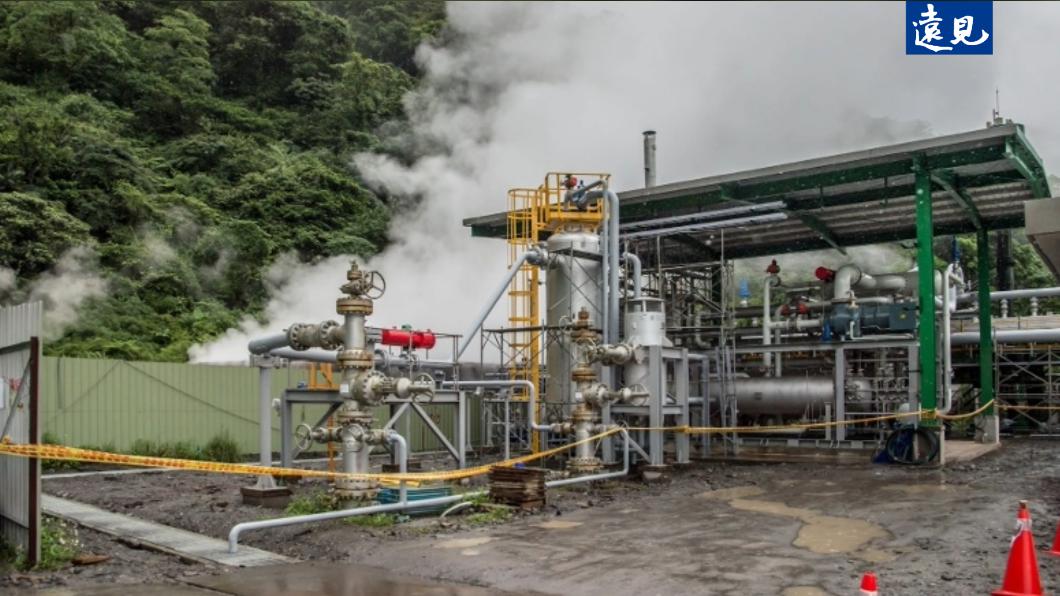Taiwan's march toward a renewable future is encapsulated in a strategy revolving around seven elements: wind, sunlight, thermal (geothermal), ocean, hydrogen, storage, and exchange. Among them, geothermal power harbors a formidable energy potential buried beneath the island's landscape, even though it is often overshadowed by its wind and photovoltaic counterparts.
According to experts, Taiwan's geothermal reserves could unleash up to 40GW (billion watts) of power, mirroring the nation's entire power production. This revelation suggests a future where Taiwan, by harnessing its full geothermal prowess, might meet its energy needs independently, elevating geothermal energy to the status of the island's "celestial third treasure."
Geothermal energy in Taiwan manifests in two distinct forms: shallow geothermal, harnessing subterranean heat within 3,000 meters, and its deeper counterpart, tapping into the earth's core beyond that depth to convert water into steam for power generation.
Historical data predating the millennium underscores the latent might of this resource, revealing that Taiwan's reserves of shallow geothermal energy eclipse 1GW, while the deep geothermal troves hold a promise exceeding 40GW. This untapped wealth signifies a frontier of vast potential awaiting exploration and harnessing.
In a significant stride toward sustainable energy, Premier Chen Chien-jen (陳建仁) ventured to Yilan last month for the grand opening of the Renze Geothermal Power Plant (仁澤地熱電廠). This event marked a pivotal moment, highlighting the government's shift in focus toward exploiting geothermal energy. A heretofore underexplored resource, capable of contributing a substantial 40GW to the nation's power grid, is now set to progressively unfold its potential, reshaping Taiwan's energy landscape.
Geothermal Energy Alone Could Satisfy Taiwan's Entire Electricity Needs
What does 40GW represent in the context of Taiwan's power landscape? Professor Song Sheng-rong (宋聖榮) of the Department of Geosciences at National Taiwan University (台大地質系) offers a digestible analogy: Should Taiwan unlock the full capacity of its geothermal reserves, the island could independently satisfy its current electricity demands.
He categorizes the island's geothermal sources into two types — volcanic and grey-volcanic. Landmarks like the Datun Volcano (大屯火山), Turtle Island (龜山島), and Green Island (綠島) epitomize volcanic geothermal potential, estimated between 6 to 7GW. Meanwhile, regions like the Central Mountain Range (中央山脈) and the Snow Mountain Range (雪山山脈) represent the grey-volcanic type, potentially contributing over 30GW to Taiwan's power grid.
According to Taipower's spokesperson Tsai Chih-meng (蔡志孟), speaking to Global Views Magazine, geothermal power not only stands out for its capacity factor (efficiency of power generation) — consistently above 50% and markedly surpassing that of photovoltaic (between 13% and 14%) and wind power (between 28% and 45%) — but also for its substantial contribution to the island's energy matrix.
With the 40GW capacity of geothermal resources, the output could reach a staggering 175.2 billion kWh annually. This figure represents nearly three-quarters (73%) of Taipower's total consumption in 2022 (236.8 billion kWh).
Furthermore, the steadfast performance of plants like the Renze Geothermal Power Plant, operating with a 70% capacity factor, generating over 245.2 billion kWh per year, surpassing Taiwan's total energy consumption recorded last year. This projection affirms that geothermal energy could be a linchpin in Taiwan's energy independence, a vision grounded in reality rather than optimism.
Tsai explains that the capacity factor serves as a pivotal gauge for assessing the developmental prospects of renewable energy. With the Renze Geothermal Power Plant operating at a capacity factor of 70% — quintuple that of photovoltaic installations — the message is clear: geothermal facilities can quintessentially outperform their solar counterparts producing "five times the electricity per unit." This superior efficiency hints that geothermal energy, once harnessed on a larger economic scale, might offer "a cost-effective alternative to solar power," challenging preconceptions about renewable energy economics.
Geothermal Boasts Triple Benefits: Stable Base-Load, Reduced Land Footprint, and Eco-Friendliness
In a hypothetical scenario where Taiwan's latent geothermal energy was to be supplanted by solar photovoltaic systems, an astronomical 200GW of solar capacity would be necessary, essentially "blanketing the entire region with solar panels." This stark comparison underscores geothermal energy's innate efficiency and minimal land usage, a paramount consideration in Taiwan's densely populated and geographically limited confines.
In the grand scheme of Taiwan's energy mosaic, geothermal power emerges as a steady stalwart compared to the capricious nature of photovoltaic and wind sources, akin to the reliability found in thermal and nuclear options.
Despite its promise, solar power is fleeting, peaking briefly for only 1 or 2 hours at midday. While robust in the Taiwan Strait's prime wind fields, wind energy aligns poorly with peak energy demands — the highest efficiency is during the autumn and winter seasons when the northeast monsoon blows, not during the summer when electricity demand is higher.
These constraints necessitate a pivot towards a steadfast alternative, positioning geothermal energy not as an ancillary source but as a cornerstone in Taiwan's pursuit of a reliable and sustainable energy paradigm.
Beneath the surface of Taiwan lies a treasure trove of geothermal energy, offering a constant, uninterrupted stream of power, save for the rare occasions of significant repairs or malfunctions. This ever-present energy source is not just a peculiarity but a strategic asset, especially for nations nestled within the Pacific Ring of Fire, where the abundance of geothermal potential is recognized and harnessed, reflecting a profound respect and reliance on this subterranean powerhouse.
Geothermal energy, with its relatively benign environmental footprint, stands apart in the renewable energy landscape. Professor Song underscores the nuanced challenges facing photovoltaic energy, often hailed as a clean solution. Despite hopes pegged on technological leaps, the lifecycle of solar panels — far shorter than the anticipated two decades — poses a recurrent dilemma of disposal and recycling. "How to recycle these materials is yet another significant problem," he said. This predicament beckons a critical reassessment, placing geothermal energy in a favorable light as a sustainable alternative, underlining the intricate balance between harnessing energy and stewarding the environment.
Land Acquisition: A Principal Hurdle for Geothermal Investors in Taiwan
While the potential of 40GW of power generation lies dormant beneath Taiwan, the true challenge, according to Tang Shou-li (湯守立), executive director of the Exploration and Production Business Division at CPC Corporation, is not merely assessing this capacity but also harnessing it. The figures span the nation, yet the reality of tapping into this geothermal wealth is complicated by the fact that these reserves often lie beneath populated, privately owned lands, making drilling operations a complex endeavor.
Factoring in the constraints posed by challenging terrains, dense urban settings, and protected lands, the government of Taiwan has set its sights on a future where, by 2050, the island's geothermal potential could be harnessed to produce between 3GW and 6.2GW of energy. This ambitious goal charts a course for sustainable development, navigating through the intricate balance between preservation and progress.
Taipower spokesperson Tsai Chih-meng (蔡志孟) highlights the ubiquity of hot springs across Taiwan as a testament to the rich geothermal reserves lying beneath the island's surface. Yet, the crux of converting this heat into electricity lies in the adequacy of temperatures.
He remarks, "While a 40 or 50 degrees Celsius warmth bodes well for leisurely hot spring soaks, it falls markedly short for power generation purposes." Moreover, the sustainability of these temperatures is crucial; any dip compromises the efficiency of these geothermal wells, underscoring the intricate interplay between nature's generosity and technological reliance.
"A few investors interested in financing have approached me, and their main concern is the issue of land," emphasizes Professor Song. Despite sitting atop a vast reserve of geothermal energy, Taiwan finds itself trailing far behind its Pacific Ring of Fire counterparts in harnessing this resource.
The Philippines is a stark contrast, ranking third globally with a geothermal capacity of over 1.9GW despite technological and social development metrics lagging behind the nation. Taiwan's cumulative geothermal capacity, not exceeding 8MW, pales in comparison, a shortfall largely attributed to policy decisions rather than geological potential.
The path to establishing a geothermal power plant in Taiwan is fraught with complexities that extend beyond the technicalities of geological surveys and drilling. Unlike the relatively straightforward installation of solar panels, the geothermal venture demands substantial upfront investment and grapples with intricate land rights, particularly in indigenous territories nestled in mountainous regions.
Rich in geothermal potential, these areas have historically seen external investors navigate the delicate social fabric through arrangements like "buying headcounts." Yet, the transition of land rights across generations introduces uncertainties and disputes, elevating the risk factor and often leaving a wealth of geothermal resources untapped due to these unresolved socio-economic intricacies.
Turkey's Tenfold Rise in Geothermal Power: A Blueprint for Taiwan's Energy Strategy
Professor Song delineates the global leaders in geothermal development into two distinct categories. The first encompasses veterans like the United States, the Philippines, and Japan, where geothermal capacity has ascended methodically, mirroring the rhythm of supportive government policies.
These nations have experienced substantial boosts in their geothermal prowess thanks to a series of policy-driven incentives. However, Professor Song notes a trend: the moment these policy-driven tailwinds wane, the surge in geothermal capacity tends to level off, indicating a dependency on continued governmental support.
On the flip side, Professor Song highlights a second cadre of nations, featuring the likes of Indonesia, Turkey, and Kenya, which are swiftly ascending the geothermal ladder. These nations exhibit a steep trajectory in geothermal capacity, akin to a 45-degree climb.
Take Turkey, for instance, which, within a span of a decade, vaulted from a modest geothermal presence, much like Taiwan's, to a formidable 1.5GW. The recipe for their success? Proactive government initiatives that lay the groundwork for a geothermal-conducive environment, underscored by tailored legislation, streamlined procedures for land and environmental assessments, and robust incentives, charting a path others could emulate.
Professor Song confidently asserts that the technical challenges, like exploration, are well within Taiwan's grasp. However, the linchpin to elevating the island's geothermal stature lies in emulating the trajectory of its burgeoning counterparts, a move predicated on robust, forward-thinking policy frameworks.
The vision of Taiwan as a preeminent geothermal powerhouse is achievable, he argues, if only the current government would match its potential with commensurate efforts. "However, the current government is not doing enough in this area," he says with concern.
This story was first published in the January issue of Global Views Magazine | https://www.gvm.com.tw/article/107676?utm_source=tvbs&utm_medium=referral&utm_campaign=monthly
More coverage:
1. https://www.gvm.com.tw/article/107737?utm_source=tvbs&utm_medium=referral&utm_campaign=related_clicks&utm_content=107676
2. https://www.gvm.com.tw/article/107812?utm_source=tvbs&utm_medium=referral&utm_campaign=related_clicks&utm_content=107676
3. https://www.gvm.com.tw/article/107586?utm_source=tvbs&utm_medium=referral&utm_campaign=related_clicks&utm_content=107676











